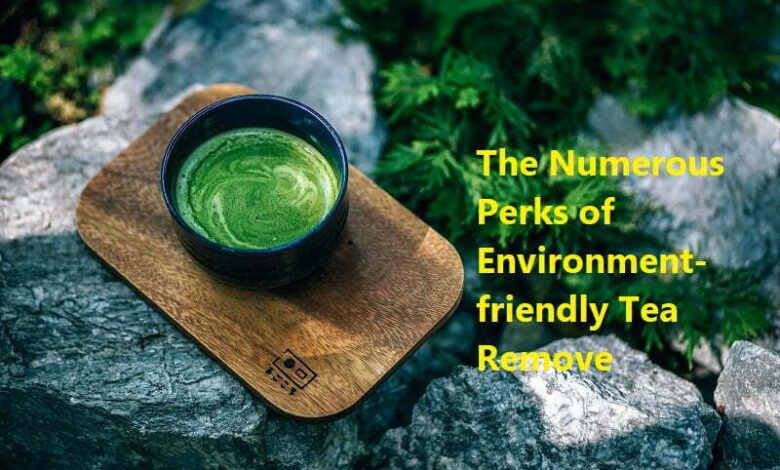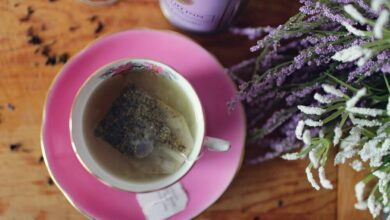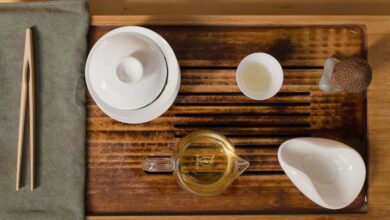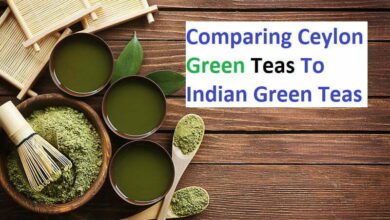
The Many Benefits of Green Tea Extract
The Numerous Perks of Environment-friendly Tea Remove The Benefits of Green Tea Extract: Anti-Aging, Anti-Cancer, Weight Control
One of the terrific innovations in nourishment in the twenty-first century is the clinical verification of the numerous advantages of eco-friendly tea remove. Below are simply a couple of.

What accounts for the health and wellness advantages of eco-friendly tea remove? Over 1,800 clinical research studies have actually located that the energetic components in eco-friendly tea are effective anti-oxidants.
Milligram for milligram, EGCG has 25 to 100 times the antioxidant power of vitamins C and also E. A mug of eco-friendly tea has even more anti-oxidants than an offering of broccoli, spinach, strawberries or carrots.
These bountiful anti-oxidants power the advantages of environment-friendly tea essence. These results of environment-friendly tea make it an effective assistance in numerous wellness problems.
Environment-friendly tea has actually been revealed to reduce “negative” LDL cholesterol and also product triglyceride degrees.
That would certainly have pictured that basic environment-friendly tea could be as powerful as Lipitor or Zocor or Crestin with none of their negative effects?

Scientific research studies reveal that middle-aged males and females in Japan that consume alcohol 2 or even more mugs of environment-friendly tea a day often have regular cholesterol.
Researchers have likewise lately reported that if you consume eco-friendly tea after you consume a fatty food, much less cholesterol will certainly enter into you blood stream.
And also if you have high cholesterol when you start taking eco-friendly tea supplements, your body will certainly transform much less of it right into a type that obstructs your arteries.
Eco-friendly tea shields your joints versus osteo arthritis.
This is among the least recognized however most helpful impacts of eco-friendly tea remove. Eco-friendly tea stops swelling. When there is much less swelling, there is much less damage on your joints.
Environment-friendly tea avoids the development of cancer cells.
The EGCG in eco-friendly tea protects against cancer cells from expanding by binding to a particular enzyme. This wellness advantage of environment-friendly tea is specifically crucial in cancers cells of the lung, bust, as well as prostate.
One eaten the matching of 12 to 15 mugs of environment-friendly tea a day. One year later on, 30% of the males that did not eat environment-friendly tea supplements created prostate cancer cells.
An additional of the advantages of eco-friendly tea remove is assistance for females that have bust cancer cells. Eco-friendly tea gives chemicals that bind estrogen. This hormonal agent is not after that totally free to promote bust cancer cells.
When the illness takes place, ladies that eat the best quantity of eco-friendly tea prior to menopause have the least serious kinds of bust cancer cells.
Females that consume alcohol eco-friendly tea are much less most likely to have reappearances of bust cancer cells after therapy.
As well as crucial of all, females that eat eco-friendly tea are 50% much less most likely to establish bust cancer cells in any way.
One more of the advantages of eco-friendly tea essence is security versus lung cancer cells.
The Japanese have both the greatest price of smoking cigarettes as well as the most affordable price of lung cancer cells in the industrialized globe.
Japanese cigarette smokers that take in a great deal of environment-friendly tea appear to be shielded versus lung cancer cells.
And also eco-friendly tea can also aid you reduce weight. In a scientific test, males consuming a high-fat diet regimen were offered sufficient environment-friendly tea give the high levels of caffeine in a solitary mug of coffee.
This quantity of high levels of caffeine has no impact on weight loss, when the high levels of caffeine comes from environment-friendly tea, it is extremely considerable.
The eco-friendly tea supplement increased the number of calories shed by 4.5%. While this is simply 135 calories a day, the research revealed that taking eco-friendly supplements might aid the typical guy on a high-fat diet plan shed 18 pounds (8 kg) in a year’s time.
If you take environment-friendly tea supplements instead than consume environment-friendly tea, the advantages of eco-friendly tea essence are biggest.
A research study in the December 2004 version of the American Journal of Clinical Nutrition verified that environment-friendly supplements obtain even more anti-oxidants right into your blood stream that alcohol consumption environment-friendly tea.
2 pills of eco-friendly tea remove a day can supply all the advantages of 20 mugs of eco-friendly tea-all you require to sustain also hard health and wellness problems.
Environment-friendly tea is reliable as well as risk-free. It is far better to take eco-friendly tea supplements in the early morning or mid-day instead than at evening.
One of the wonderful improvements in nourishment in the twenty-first century is the clinical verification of the numerous advantages of eco-friendly tea essence.
These plentiful anti-oxidants power the advantages of eco-friendly tea remove. An additional of the advantages of eco-friendly tea essence is assistance for females that have bust cancer cells.
The advantages of eco-friendly tea remove are best if you take environment-friendly tea supplements instead than consume alcohol environment-friendly tea.
A research study in the December 2004 version of the American Journal of Clinical Nutrition validated that environment-friendly supplements obtain even more anti-oxidants right into your blood stream that alcohol consumption eco-friendly tea.
Tea: Grading Jasmine Tea
Jasmine tea is the most popular flavored tea in the world. The first jasmine tea was produced in China and made from green tea.
Today, however, jasmine flowers are used to scent teas from all over the world, in black, white, green and oolong varieties.
What makes jasmine tea so wonderful is its special blend of high quality loose tea leaves with jasmine petals. The jasmine petals impart a delicate yet very aromatic fragrance and a slightly sweet flavor to the tea.
Jasmine has been produced in China for at least 700 years. The original production of jasmine tea included plucking the jasmine blossoms just as they were beginning to open in the morning.
Then the jasmine petals were kept cool until evening when they were added to the green tea leaves.
The jasmine petals were infused with the tea leaves at night because this is the time when the petals release their fragrance. The teas were infused with the jasmine petals multiple times to obtain just the right scent and flavor.
Today, the process is more automated, but good quality jasmine tea still depends upon using the best loose tea and infusing it with just the right amount of jasmine blossom.
For the jasmine lover, there are many choices in tea. However, it can be difficult to spot a really good jasmine tea, because interpreting the way teas are graded can be difficult.
First, it’s important to understand that there are no international standards on grading tea. Each country uses their own system, and even different types of tea are graded differently. For example, green teas are not graded the same as white teas.
So, understanding how the jasmine tea you’re considering is graded really means understanding how the tea variety that the jasmine tea is made from is graded. Here are some examples to help make it easier to understand.
Black Tea
Black tea is graded primarily based on how it’s processed.
So, while this will tell you the approximate percentage of whole leaves in your tea, and may tell you if it comes from an early or late plucking, it’s not the total picture when it comes to judging the quality of the tea.
Knowing where the tea was grown and how tea is harvested in this part of the world is important, too. In the US,
the best black teas are considered whole leaf teas and are designated by the term Tippy Golden Flowery Orange Pekoe. You should avoid teas marked “dust” as these are typically the lowest grades of black tea.
Green Tea
Green tea is typically graded by the shape of the leaf in China. In other parts of the world, green tea is also usually graded by leaf shape, but different names are used to describe the leaf shapes.
Within the leaf shapes, in both China and other countries, you’ll find grades that further break down the quality of the tea.
Oolong Tea
Oolong tea from China is graded in a simple manner that is easy to follow and understand. The best oolong tea is referred to as “Fanciest” or “Extra Fancy”, while the lowest grade of oolong tea is referred to as “Common”.
Since most oolong tea is produced in China, it’s fairly simple to sort out a good oolong jasmine tea. However, if you buy an oolong tea from another country it could be graded in a totally different manner.
White Tea
White tea’s grading is somewhat simpler, because when the tea leaves were plucked is not part of determining the quality. All white tea is from a first plucking, because there is only one plucking of white tea during each growing season.
Therefore, choosing a quality white jasmine tea from China simply means choosing one of the two highest grades of white tea, Silver Needles or White Peony.
However, if you choose a white Ceylon jasmine tea or a white Darjeeling jasmine tea, the grading will be totally different.
To choose a good jasmine tea, begin by determining whether you want a white, green, black or oolong jasmine tea.
If you’re new to drinking jasmine tea, it’s likely best to begin with a Chinese green jasmine tea, as this tea represents the true essence of the jasmine tea.
Once you’ve sorted out the variety of tea you’d like to try and the country of the tea’s origin, simply look for this tea from a quality tea store.
If you can’t find the combination you’ve chosen at a good tea store, then it’s likely that very good qualities of this particular combination are difficult to find.
Keep looking until you find a combination that can be purchased from a reputable tea purveyor. This way you’re assured of the quality of the tea, even if the combination was not what you had originally planned.
It’s hard to go wrong with jasmine tea.
The scent is soothing and light and the delicate sweetness complements any variety of tea. It’s no wonder that every country that produces tea makes this delightful beverage. The hard part is figuring out which jasmine tea you like best!
Tea: Drinking Jasmine Tea
Jasmine tea is the most popular variety of flavored tea. This is, in part because Jasmine has been used to scent and flavor every variety of tea: white, black, green and oolong.
So, no matter your preference in tea, there is a Jasmine tea for you.
Jasmine tea dates back to the Sung Dynasty.
To make this delicious blend, tea artisans plucked jasmine blossoms just as they were beginning to open. Then the petals were stored in a cool place until nightfall, when the blossoms began to release their fragrance.
They were then added to dry green tea leaves, to allow the dry tea leaves to absorb the fragrance. Ordinary grades of tea were scented two or three times; the special grades even more.
Today, most jasmine tea is still made with green tea, though the process is no longer carried out by hand. Most believe that the Fujian region of China produces the best jasmine tea because it is this area of China that
produces the largest and most heavily scented jasmine blossoms and the loosest green tea leaves.
The looser the tea leaves, the better they are able to absorb the jasmine fragrance. The first plucking of green tea will produce the best jasmine tea because the leaves are at their tenderest.
While the majority of jasmine tea is green tea, there are also quite a few white and oolong jasmine teas. White tea, in particular, lends itself quite well to being combined with jasmine because both offer a sweet and subtle flavor and fragrance.
Oolong jasmine teas are smooth with the fruity taste that is common in oolong tea. However, the jasmine also makes the tea fragrant and sweet. You’ll find oolong jasmine tea to have one of the most distinctive flavors of any jasmine tea.
And, for the die hard black tea drinker, there is also black jasmine tea. This variety can be a bit harder to find than other varieties of jasmine tea.
Because black tea has a stronger flavor than other varieties of tea, the jasmine flavor is less noticeable when it is combined with black tea. Still many black tea lovers who favor lightly flavored teas find this blend very appealing.
Regardless of the variety of jasmine tea you choose, you should make the time and effort to brew the tea correctly to ensure the best flavor.
First, begin with the best loose tea. The best way to ensure that you get good tea is to purchase it from a reputable tea shop whether in your local area or online. Really good tea may cost a bit more, but its quality is unmistakable.
Brewing good tea requires fresh cold water. Put the water in a clean tea kettle and bring it to a boil on the stove. Meanwhile, put hot tap water in your teapot to warm it up while the water is heating.
Once the water boils, remove the tap water from your pot and add your tea leaves. For white jasmine tea, use about 2 teaspoons of loose tea per cup.
For other jasmine teas, you’ll only need about 1 teaspoon per cup. Follow the table below to choose the appropriate water temperature and steeping time for your jasmine tea.
Tea VarietyWater TemperatureSteeping Time
Black JasmineBoiling 3-5 minutes
White Jasmine185°F 5-8 minutes
Green Jasmine160°F 1-2 minutes
Oolong Jasmine Boiling 2-3 minutes
Adhering to the appropriate water temperature and steeping time is critical for making good tea. Too much steeping and your tea will be bitter; too little and the tea will be thin and weak.
Water that is too hot for delicate teas like green and white will compromise the tea’s light flavor.
Jasmine tea, particularly, green and white jasmine teas, are also wonderful for iced tea. The jasmine fragrance and light sweetness are perfect for a hot day.
To make iced tea, brew several servings of tea at once and cool. For white and green teas, allow the tea to cool completely before you add ice. Adding ice to the hot tea may dilute the delicate flavor too much, making it taste weak and flavorless.
Jasmine tea has been around for centuries for a reason. It’s one of the most delicious varieties of flavored tea around, regardless of the type of tea used.
Whether you choose black, white, oolong or green jasmine tea, you’re sure to be delighted by its fragrant bouquet and its sweet taste. It complements every flavor of tea and creates a soothing and delicious beverage whether hot or cold. And jasmine tea is a healthy beverage, too.
In recent years, tea, particularly green and white teas have received a lot of attention for their potent anti-oxidants. The anti-oxidants in tea and other plant based foods help fight free radicals in our bodies.
These free radicals are oxygen containing molecules that damage our cells and DNA. A diet rich in anti-oxidants rid our bodies of these free radicals before they can damage our bodies.
Diets rich in green and white tea have been shown to prevent serious illnesses like cancer, high cholesterol and cancer.
So, as you can see, jasmine tea is good and good for you. So, try some jasmine tea yourself – you’re sure to be pleased.
Tea Tree Oil for Bad Breath
Tea tree oil has a long history of medicinal use. Several researches have found out that this special herb has been used by aboriginals for thousands of years and several stories about a magical lagoon where the tea tree leaves have fallen and gathered were told.
Well, scientifically known as melaleuca alternifolia, the tea tree oil is said to have originated from Australia where it is named as a native Australian herb that possesses remarkable healing properties.
It also grows in the Northern New South Wales, and the oil which is used for some medicinal purposes is actually derived from the cells of the tea tree leaves. The oil, for long years, has been used for surgery, skin care, and dental care.
Speaking of dental care, the tea tree oil is deemed potent for treating bad breath. It’s no wonder then that today, thousands of toothpastes and oral products are formulated with the tea tree oil on it.
The oil is even applied in some mouthwashes and mixed in some solutions to eliminate bad breath.
Tea tree oil for bad breath is offered for some good reasons. In the first place, the tea tree oil for bad breath is antifungal and antiseptic that it can kill bacteria and fungi that
thrive in the mouth through food particles that are left unwashed. It is its antiseptic property actually that makes tea tree oil for bad breathe a powerful disinfectant.
Aside from that, tea tree oil for bad breath is proven to have antibiotic properties that can help heal infections in the gums.
They are said to be useful for treating severe chronic gingivitis and bleeding of the gums as they deeply penetrate to the skin, allowing the skin to heal and restore its original condition.
This is perhaps one of the best reasons that most dental experts today recommend their patients to use toothpaste that contain tea tree oil for bad breath.
Numerous studies have also revealed that tea tree oil for bad breath is highly safe. As support for this is the fact that the oil is a 100% natural product. It is extracted entirely from a renewable natural resource, making it an environmentally friendly product.
It is also worth noting that the tea tree oil for bad breath is derived from tea trees that are meticulously managed to make sure that the natural environment where they survive is intact and undisturbed.
However, there are certain cases of unfavorable effects of tea tree oil for bad breath. Some have noted that tea tree oil for bad breath may not totally eliminate plague.
Some forms of allergies may even occur, but their incidence is tremendously low when compared to the synthetic products out there in the market.
With all the possible side effects of tea tree oil for bad breath, experts do recommend dental check up to accurately determine whether the oil you are using for your bad breath is the right option for you to consider or not. So before you use a tea tree oil for bad breath, see your dentist first.
composition of green tea,green tea,green tea side effects,green tea extract,black tea,green tea fat burner,types of tea,active constituents of green tea,







